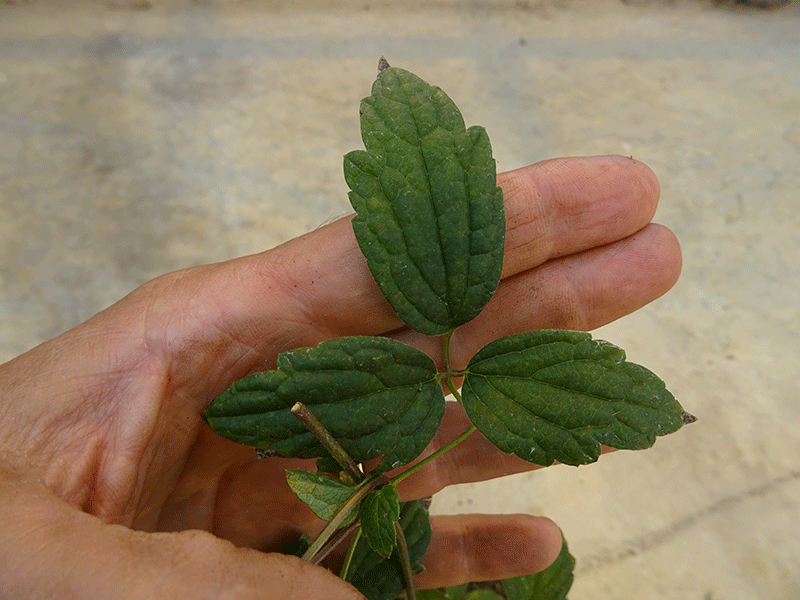Poison Ivy
A HEALTH PROBLEM AT HOME AND THE FARM
LEAVES OF THREE, leave it be. So went the warning many of us heard from our mothers to keep us safe from poison ivy, the noxious weed that is both a nuisance and a health hazard. But there’s more to correctly identifying the plant.
PHOTO: POISON IVY
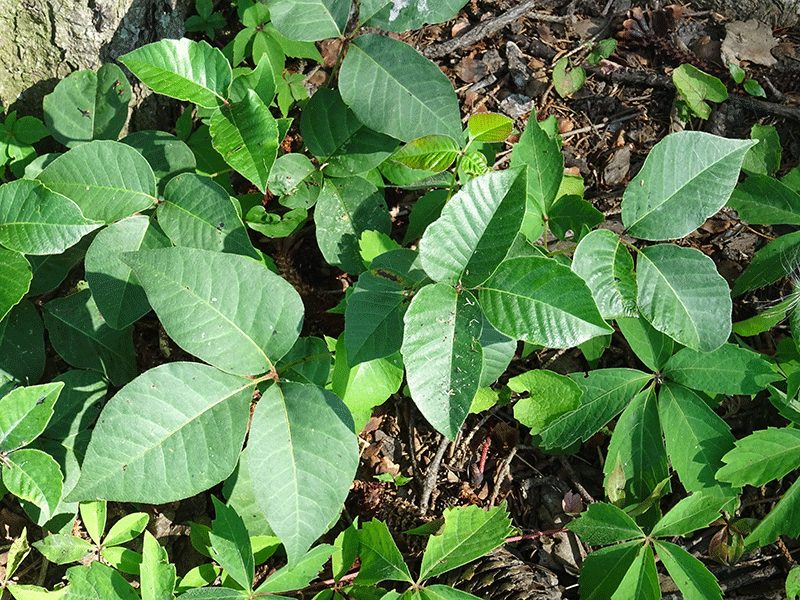
IDENTIFICATION AND WHERE IT GROWS
According to the Government of Canada, poison ivy can be found in every province except Newfoundland. Specific to Ontario, a provincial government Fact Sheet says it is widespread throughout southern Ontario and reaches as far north as Cochrane and Kenora, though it is found most abundantly south of a line from the north shore of Lake Huron through North Bay.
While it generally prefers to avoid open, exposed areas, poison ivy grows almost anywhere: sandy, stony, or rocky shores; in thickets, woody areas and clearings; and along fence rows, wind breaks, and roadsides.
“It’s very prevalent in Ontario and right across eastern North America,” says Dave Bilyea, a weed scientist technician with the University of Guelph Ridgetown Campus. He says the “leaves of three, leave it be” is the most simple identification feature, but adds that a key identifier is the centre leaf of the three leaves has an extended petiole (the part that attaches the leaf to the stem.)
Typically shiny and bright green, Bilyea says the leaves turn orange and red in the fall. The margins of the leaves have a lot of variability, though — some will be smooth, others jagged, and others will have lobes — sometimes making it more difficult to identify.
Poison ivy also grows horizontally as a bush, and vertically as a climbing vine.
“What’s perplexing for people is there is the bushy type, which is what wary people are generally looking for, but there’s also a climbing vine type that grows right into the bark of trees or side of buildings,” warns Bilyea. “You don’t really recognize it as poison ivy because the leaves are high up in the canopy well above the sight line.”
He says beyond being a pretty plant that is food for deer, birds, and other animals, poison ivy has no other useful purpose.
“The problem with poison ivy for farmers has nothing to do with yield,” says Bilyea. “It’s a serious health hazard and the farmer can get poison ivy even if they don’t set foot in the field.”
HOW YOU GET IT
People develop a reaction to poison ivy when they come in contact with the plant’s toxic oily organic urushiol resin, any time of the year, in any of the following three ways:
Direct exposure/touch: all parts of the plant, including the roots, stems, and climbing vine can contain urushiol oil. Even dead plants can have the oil, which can remain reactive for up to five years.
Indirect exposure: touching animals (including cats and dogs), tools, clothing, and pretty much anything else that has come in contact with the oil and has some on it can expose it to you and cause a reaction.
Exposure to burning poison ivy: yes, even the smoke containing ash and dust from poison ivy can inflame the skin and cause serious problems when inhaled, which is why people should avoid burning poison ivy directly and be cautious when burning other brush.
Coming in contact with the urushiol oil causes an allergic reaction. Like other allergies, some people are more susceptible to the exposure than others, with some people showing very little, if any reaction, all the way up to, at its most severe, a deadly reaction. It all depends on the person’s sensitivity and the amount of oil they come in contact with. The Government of Canada’s Healthy Canadians website says most people develop rash-like symptoms 24 to 48 hours after contact, with the inflamed areas often becoming itchy and developing into blisters.
It warns that if poison ivy is burned and the smoke is inhaled, the rash will appear on the lining of the lungs, causing extreme pain and possibly fatal breathing problems. If poison ivy is eaten, the airway, digestive tract, kidneys, or other organs can be damaged.
According to Bilyea, it has been documented that rising CO2 levels in the atmosphere have increased the potency of poison ivy’s urushiol oil.
TREATMENT
The government’s Healthy Canadians website advises people to wash any areas of their skin that may have come in contact with poison ivy (or the oil) with soap and cold water. Cold water should be used, it says, because hot water tends to open the pores, increasing the chances of the resin being deeply absorbed into the skin.
If soap is not available, vinegar (2 tablespoons in 1 cup of water) or alcohol (1/2 cup to 1/2 cup of water) can be used.
It warns that while this may not prevent a reaction, it will likely prevent the infection from spreading. Skin irritation including itching, red inflammation, blisters and, in severe cases, oozing sores, normally disappear in seven to 15 days.
The website also says the rash can only be through exposure to the oil, not from the sores themselves.
Anyone experiencing a severe reaction or who has concerns should seek medical help.
CONTROL
Poison ivy can be difficult to control and eradicate because of its extended root system and because birds tend to eat the berries and spread it to other areas. Still, the Ontario Ministry of Agriculture, Food and Rural Affairs says you may be able to disrupt its growth by digging out the plant’s roots and stems, or by applying herbicides. It warns, however, that any herbicides which kill poison ivy may also kill or damage other plants growing nearby.
PLANTS MISTAKEN FOR POISON IVY
Dave Bilyea, a weed scientist technician with the University of Guelph Ridgetown Campus, says poison ivy is often confused with the following plants.
Kudzu
Also known as “the weed that ate the South”, this three-leaf native Chinese plant was imported to the U.S. in 1876 as a forage crop and later promoted for soil erosion. It is now considered a noxious weed in the U.S., and was discovered in southwestern Ontario near Leamington in 2009. The leaves are hairy and much bigger than poison ivy, and the vines can grow up to 30 cm in a day, or 10 to 30 metres in a growing season.
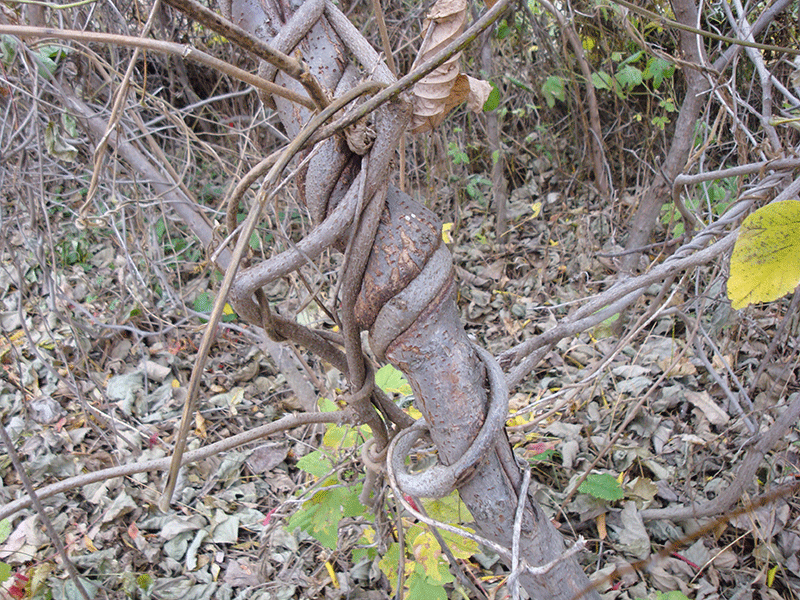
Virgins Bower
An aggressive, native vine with toxic properties that has toothed, trifoliate leaves, but the petiole is extended on all three leaves.
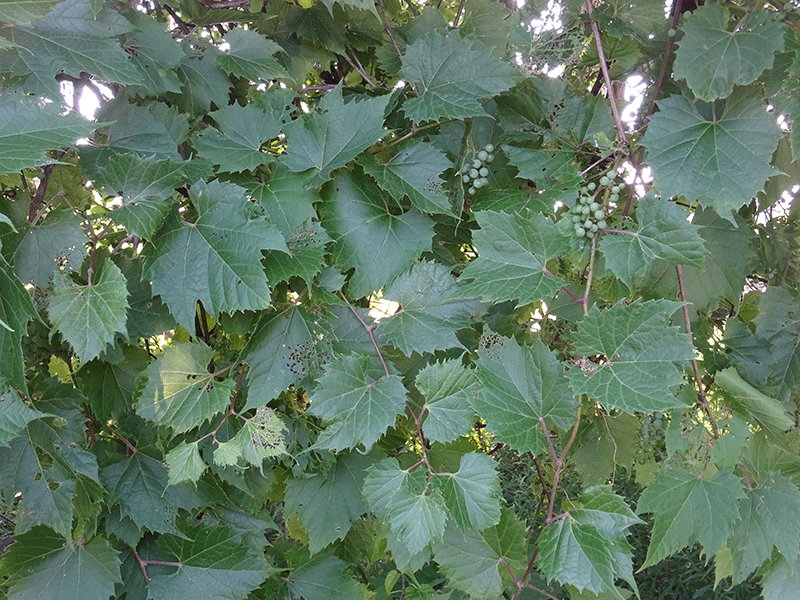
Virginia Creeper
Although not generally found in conventional fields, this plants has been known to propagate in no-till fields. It looks like poison ivy but most plants have five leaves, as opposed to poison ivy’s three.
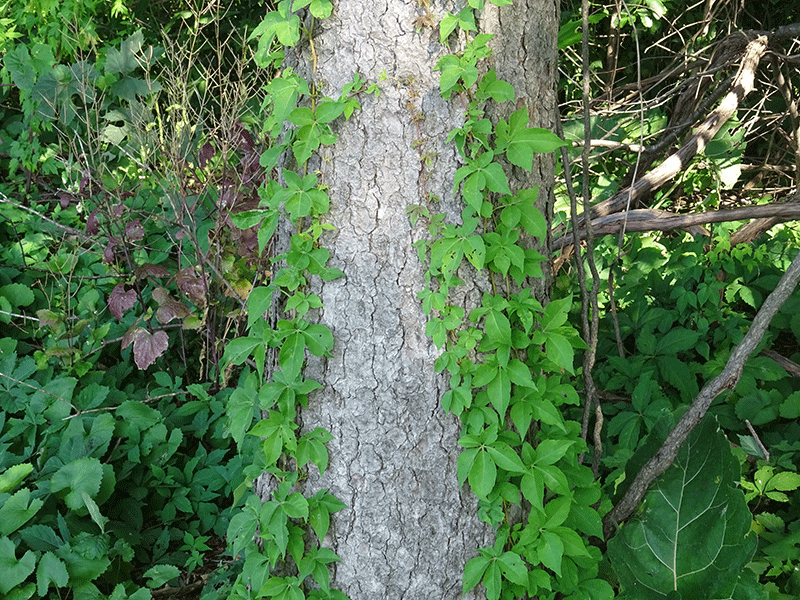
Wild Grape
Looks very similar to poison ivy, with three alternate, toothed, palmate leaves. •
